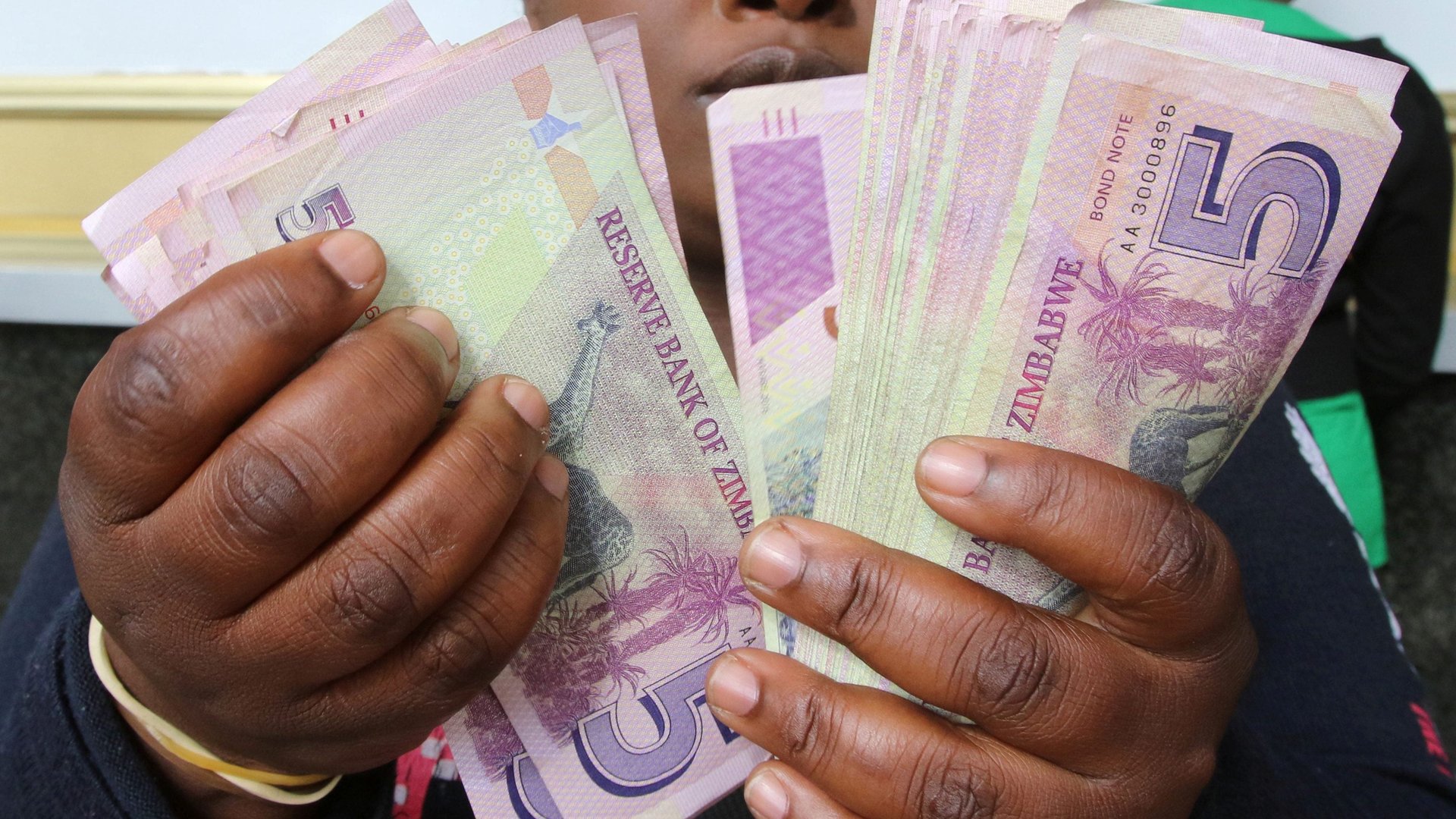Zimbabwe is trying to bring back its own currency but no one seems to think it’ll work
With the ink barely dry on a failed surrogate bond note currency, Zimbabwe’s central bank is mulling running the printing press yet again for a new unit before the end of the financial year as US dollars disappear from circulation, prices rise fast and the economy stutters to a halt.


With the ink barely dry on a failed surrogate bond note currency, Zimbabwe’s central bank is mulling running the printing press yet again for a new unit before the end of the financial year as US dollars disappear from circulation, prices rise fast and the economy stutters to a halt.
Evidence of the colossal failure of the bond note, a currency the central bank chief claimed had a par value to the US unit in 2016, has done very little to dissuade monetary authorities from considering a new iteration. Zimbabwe adopted the use of a basket of strong currencies in 2009 to end an unprecedented period of hyperinflation that devastated the value of the Zimbabwean dollar.
But the road to introduction of the proposed currency is fraught with many economic hurdles, pitfalls and is near herculean, economists warn as the economic stability and other gains achieved during dollarization have been squandered.
US dollars are now only available on the thriving foreign exchange parallel market and have very high valuations.
Zimbabwe’s central bank chief John Mangudya and finance minister Mthuli Ncube believe the answer to Zimbabwe’s economic problems can be found in a new currency and other fiscal measures being spearheaded by president Emmerson Mnangagwa’s government.
Economic fundamentals are just not ideal economists say, warning it could suffer the fate of its two predecessors.
“The fundamentals are definitely not right to sustain any new currency,” Victor Bhoroma, an independent Harare-based economist said. He cited Zimbabwe’s high public debt levels of $18.5 billion, sustained average fiscal deficit of $2.3 billion in the last three years, current account deficit and low international (nostro) bank account balances as factors that would militate against the latest currency push.
Bhoroma said Zimbabwe’s central bank must address the exchange rate disparities between the US dollar and the bond notes and tackle the possibility of hyperinflation in the economy before introducing a currency. The value of bond notes has suffered against major currencies. It is currently trading at a discount of 400% to the greenback. And analysts see it giving up further value in the near term as forex shortages worsen.
Officially, Zimbabwe’s annual inflation is now at 42% but unofficial figures are pointing above 290%.
In a country that has often found itself hostage to the whims and caprices of various central bank chiefs with an unbridled knack for running the printing press and a government whose propensity to spend is legendary, the skepticism of experts to a new currency seems to accurately reflect the mood of the general public.
“The introduction of a currency is quite delicate at the moment given our current economic circumstances. We have undermined the multi currencies system, says independent Harare-based economist Godfrey Kanyenze. “The indicators are going the other way. Government needs to rein in deficit and stop fiscal indiscipline. We need to deal with that and then we can start having a conversation around introducing a currency.”
Mistrust of monetary authorities stemming from how the central bank has managed the economy in the last two decades will be a stumbling block to the new currency, he adds.
“Currency is based on trust and confidence,” Kanyenze says. “We need to address the trust and confidence deficit and create cohesion. If you don’t address that, you will destroy the currency. It’s not an issue of leaping back to the Zimbabwe dollar.”
Additionally, the Zimbabwean government cannot be trusted to run its own monetary policy given its tendency to live above its means, economists say.
“Since 2013, they have repeated the same largesse by pumping billions into the economy to plug the deficit gap. Much is needed to win back domestic and investor confidence,” Bhoroma said.
Ideally, economists say Zimbabwe should have a budget surplus of not more than 1% of the country’s gross domestic product, stable foreign currency nostro accounts to guarantee currency stability and stable production at 80% capacity utilization levels to guarantee enough export earnings before introducing a currency.
In a research note, Invictus Securities, a stockbroking firm wrote : “In our view…economic fundamentals are still very weak, hence cannot sustain a local currency. Local production remains very low, culminating in a sustained trade deficit, whilst confidence level is also critically low.”
Zimbabwe’s economic plight has been worsened by the fact that the central bank has no reserves. At best, the troubled country always has two weeks of import cover.
But not everyone thinks things are in the worst situation. South Africa’s finance minister Tito Mboweni is holding out hope for Zimbabwe, saying the introduction of a currency could be the cure to Zimbabwe’s economic malaise.
“I think the idea of using a new currency in Zimbabwe is a good one. We are working together very well but at the end of the day it is Zimbabweans who need to fix their country,” Mboweni told Bloomberg.
Sign up to the Quartz Africa Weekly Brief here for news and analysis on African business, tech and innovation in your inbox